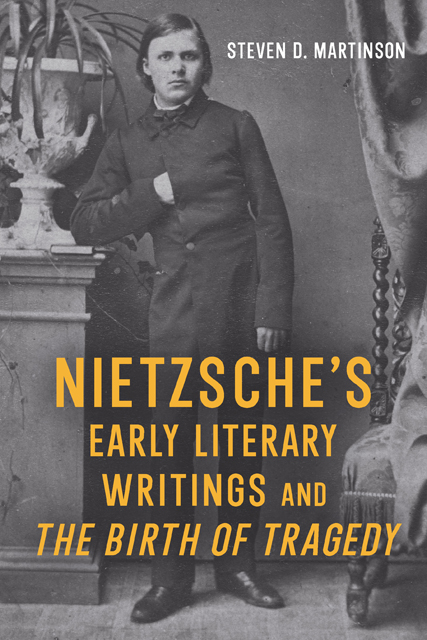Introduction: Early Nietzsche
Published online by Cambridge University Press: 17 December 2022
Summary
Friedrich Wilhelm Nietzsche was the son of a Lutheran pastor who stood in a long line of protestant theologians on both sides of the family. He was born in the village of Röcken, outside Lützen, Germany, on October 15, 1844. Nietzsche's father, Carl Ludwig Nietzsche, baptized Friedrich (“Fritz”) nine days later, on October 24. Since that was the birthday of the King of Prussia, he gave his son the king's middle name, Wilhelm. The Nietzsche family, Carl, his wife Franziska, Friedrich, and Elisabeth, are buried next to the church in Röcken.
A wall-relief of the Christian martyr St. George is found to the left of the altar of the church. Curiously, the image caused the boy to shudder. In his earliest autographical writing, Aus meinem Leben (From My Life, 1858), Nietzsche described the image as suprahuman (“übermenschlich”). It is his first use of the term. The image of St. George in the village church is hardly terrifying. St. George of Röcken stands strong before a peaceful city gate. His helmet lies next to him on the ground. The image of St. George exhibits steadfastness, fortitude, and determination. In stark contrast to numerous other representations of the martyr, there is no sign of the knight slaying a dragon. What then might young Nietzsche have found so ominous in the wall-relief of St. George in the church sanctuary? The relief is located close to the stairway to the pulpit. It was not just the image of St. George that caused the boy to shudder. It was also the man in his dark clergy gown preaching from the raised pulpit proclaiming the Word. Nietzsche's father was the spiritual father of the community. According to traditional Lutheran understanding, preaching was divinely inspired. A pastor's words also created vivid images in the minds of his parishioners. Nietzsche came to appreciate the power of words through his father.
The parson (“Pfaffe”), Carl Nietzsche, held his last sermon on September 7, 1848. He had been suffering from brain hemorrhages, lost his speech and sight, and died in the early morning of July 30, 1849. He was just thirty-six years old. The man was diagnosed with encephalomalacia (softening of the brain). The illness may have been precipitated by a fall.
- Type
- Chapter
- Information
- Publisher: Boydell & BrewerPrint publication year: 2022



